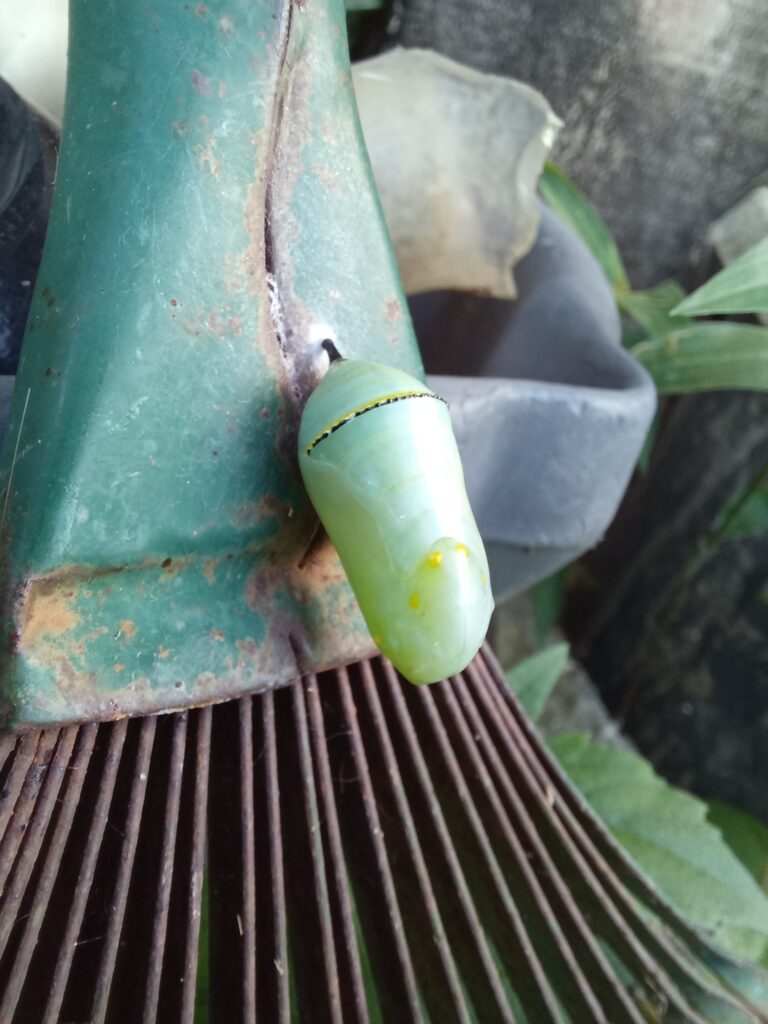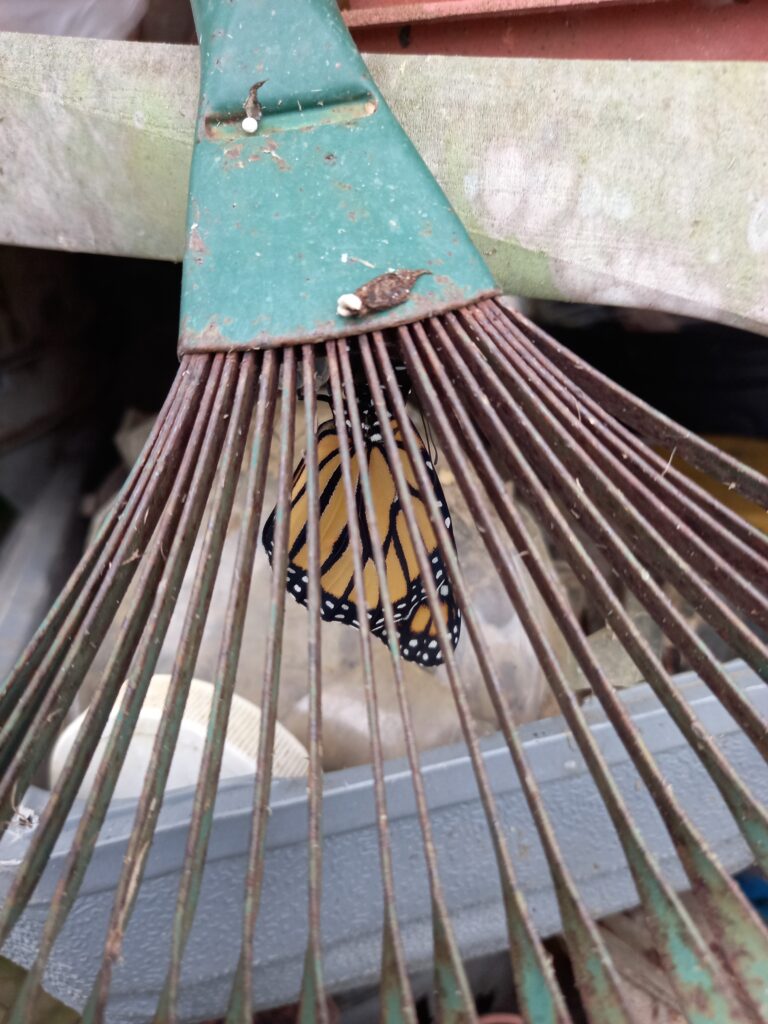Since discovering my first Tropical Milkweed just walking distance from my home a couple of years ago, several plants have been propagated and others have popped up from their wind-dispersed seeds. As a result, Monarch butterflies have become somewhat of a mainstay in my yard, drinking their fill of nectar from the red and orange flowers and laying their eggs on the leaves of their food plant, which are practically devoured to satisfy the voracious appetite of their caterpillars.
I feel privileged to be witness to the life cycle of the threatened Monarch Butterfly (Danaus plexippus). However, one crucial stage of this life cycle had eluded me, the pupa. For all the eggs, caterpillars and butterflies I had seen, I had yet to see the jade chrysalis in which their remarkable metamorphosis occurs. I had searched under leaves, along branches, blades of grass and adjacent plants without success. It seemed as if I would never witness this part of a Monarch’s life, until one day while reaching for a rake to clean some cut grass I noticed something foreign attached to it, the elusive chrysalis. This particular caterpillar had chosen to attach itself to the most unlikely of places.
Needless to say, the raking of the grass had to be postponed and the rake carefully returned to its original position until the emergence of an adult butterfly. Every day after that was met with anticipation of its arrival, until the morning of the eighth day, on my daily inspection, suspended from my garden tool was a newly emerged Monarch butterfly about to begin the cycle all over again.

